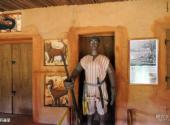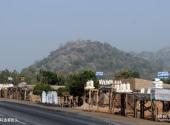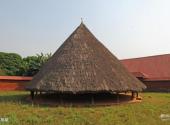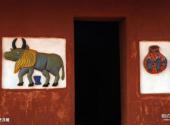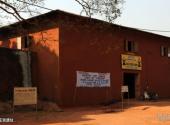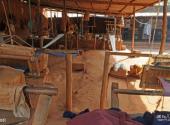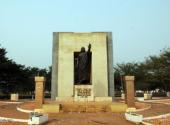
Scenic spot introduction:
The Royal Palaces of Abomey are unique witnesses of the extinct Abomey Dynasty. Located in the south of Benin, Abomey was once the capital of the Kingdom of Dahomey, which prospered for a time on the West African coast due to the slave trade. Built in the 17th century, the Royal Palaces of Abomey witnessed the rise and fall of the Abomey Dynasty, which ruled from 1625 to 1900. In the mid-18th century, the Abomey Dynasty accumulated huge wealth by constantly plundering land and slaves, and once became the overlord of West Africa.Attractions distribution:
Abomey Palace is a special palace. The biggest attraction is the Ceramic relief Other highlights include Cottages , Weapon Room , Wooden door wait.Scenic spot qualifications:
World HeritageScenic spot features:
relief, history, civilization, Royal Palace Ruins , Ceramic relieftravelling guideline:
In southern Benin, corn is the staple food. Corn flour is often used to make various doughs, which are usually eaten with peanuts or tomato sauce. In northern Benin, yams are the staple food. Pounded yams are often eaten with peanuts or tomato sauce. Beef, pork and chicken are the most commonly eaten meats, which are usually fried or boiled in soy sauce.
Shopping: Woodcarving is the most common and historically important art form in Benin, with the carving tradition dating back to the days of the Kingdom of Dahomey.
Best time to visit:
Benin has a tropical climate, with an annual maximum temperature of 39 degrees Celsius and a minimum temperature of 20 degrees. The year is divided into four seasons: November to March of the following year is the long dry season, with February and March being the hottest months; April to July is the long rainy season; July to September is the short dry season with a pleasant climate; September to October is the short rainy season.
Scenic spot location:
Africa > Benin
How to get there:
Aircraft: Cotonou International Airport is the only A1 international airport in Benin, capable of taking off and landing large aircraft such as Boeing 747 and Airbus.
Train: Benin currently has 685 kilometers of railways, including three narrow-gauge railways. The north-south main line is 438 kilometers long and mainly operates transit goods from Niger.
Road: Benin is connected to Nigeria, Burkina Faso, Niger and Togo by road. Most of the traffic between regions is by road. The Cotonou-Porto-Novo highway was opened in January 2003.
Scenic area map:
Click to expand the scenic area map
Precautions:
1. Benin is a high-incidence area for malaria. Tourists must prepare mosquito nets and mosquito and malaria prevention drugs. Pay attention to food hygiene and avoid eating raw and cold food to prevent intestinal diseases. In addition, Benin has a hot climate. When traveling, pay attention to heatstroke prevention and cooling. It is recommended to bring a small amount of commonly used medicines, such as the antimalarial drug Cotaixin, antibiotics and medicines for treating gastrointestinal diseases.
2. Chinese citizens, whether they are living in Benin for a long time or staying for a short time, are requested to carry relevant identification documents with them. The Benin police will often check this, and those who do not have legal and valid documents will often be detained.

